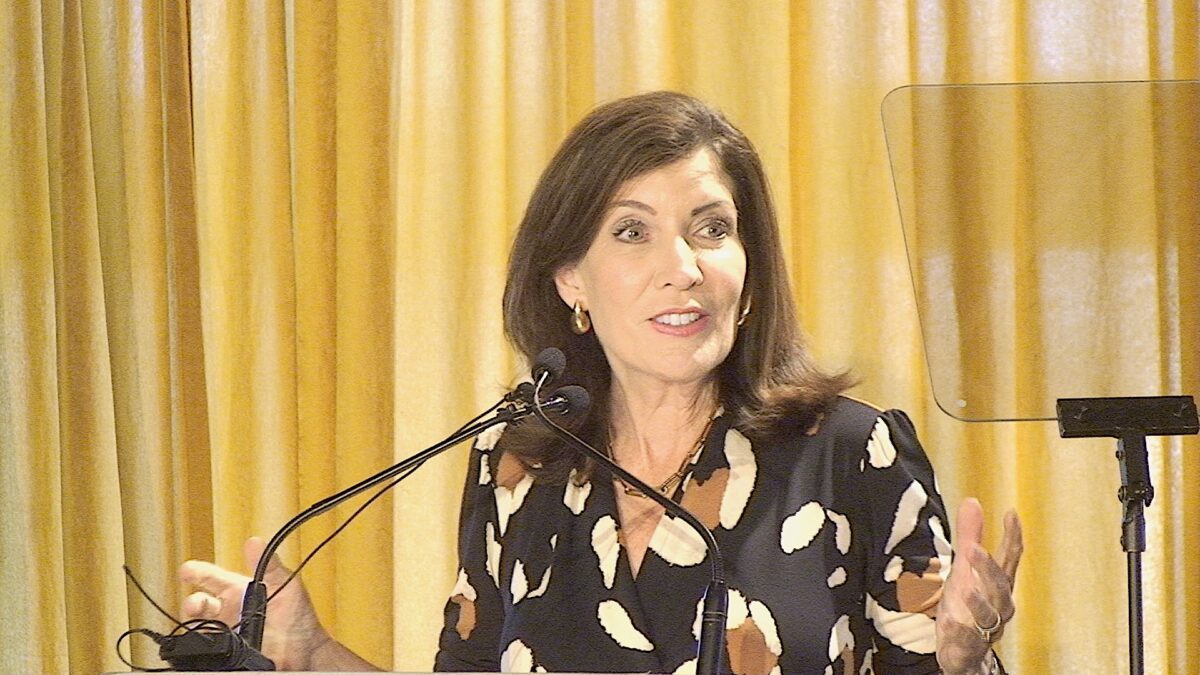A recently introduced pain management program at Norwalk Hospital has resulted in a 45 percent reduction in opioid ordering by emergency room physicians. The hospital hopes those results can be duplicated at other facilities both within and outside the Western Connecticut Health Network, to which it belongs.
 “It really began by looking at the opiate crisis from a population-health standpoint,” said Dr. Benjamin Greenblatt, chair of emergency medicine at the hospital. “The emergency physicians here are very passionate about the topic.”
“It really began by looking at the opiate crisis from a population-health standpoint,” said Dr. Benjamin Greenblatt, chair of emergency medicine at the hospital. “The emergency physicians here are very passionate about the topic.”
Greenblatt cited emergency physician Chris Michos as instrumental in getting the initiative, introduced in 2016, underway. “Given what we”™ve all seen over the last five years or so about the opiate crisis, he asked why we weren”™t doing something like this,” Greenblatt said. “He did a significant amount of research and visited a number of hospitals in the region,” including St. Joseph”™s Healthcare System in Paterson, New Jersey, which saw a 58 percent decrease in opiate prescriptions within a year of introducing a similar initiative.
The state saw a steady increase in use and abuse with drug-related deaths increasing 25.6 percent from 2014 to 2015 and an additional rise of 24 percent from 2015 to 2016.
In 2017, the number of deaths appeared to stabilize. However, new data from the Connecticut Department of Public Health reported a suspected 1,317 drug-related emergency department visits statewide in the first two months of 2018.
Working with other physicians, nurses and technicians in Norwalk”™s IT department, the hospital developed an initiative to supply alternatives to opiates when treating pain in its Bauer Emergency Care Center. Greenblatt said the hospital believes it is the first program of its kind in the state.
The program involves:
Ӣ adoption of new guidelines and protocols;
Ӣ implementation of impro-ved ultrasound guided peripheral nerve blocks, thus decreasing the need for narcotics in the emergency room;
Ӣ use of utilization data to monitor the monthly usage of opiates in the emergency room and measure progress; and
Ӣ extensive education for providers on the opioid issue, opportunity for improvements and the use of alternative pain management therapies, including the use of non-opiates to alleviate pain.
The 45 percent reduction in opioid-ordering occurred during the first year of the program, 2016 to 2017. Greenblatt said that data was not yet available for this year, but said the hospital expected similar reductions in 2018.
One way that the hospital is approaching the problem is through its electronic medical records that now can include special notations about a given patient”™s past history with opiates. “We can flag patients (with perceived excessive use of opiates) and provide them with a special care plan to discourage more usages.
“If someone is suffering from a severe headache, backache, kidney stones or similar conditions, we want to be able to offer opiate alternatives when we can,” Greenblatt said. “Of course there”™s always the option to use an opiate, and in severe cases we will continue to do so. But this is a matter of getting people educated about what else is out there that can work for them.”
He said that older patients seem to be particularly concerned about the potential addictive properties of what they”™re prescribed. “They”™re very concerned about becoming addicted.”
Greenblatt said younger patients “are not necessarily asking not be given narcotics.” In 2016, more than 2.5 million Americans were abusing prescription opioids or heroin, according to the American Society of Addiction Medicine. And it”™s adults aged 25 to 34 who”™ve been hit the hardest, the researchers found. In 2016, 20 percent of deaths in the 25-to-34 age group involved opioids, up from just 4 percent in 2001.
Katherine Michael, a psychiatrist and medical director of community health at Western Connecticut Health Network (WCHN), noted that opiate abuse is also a significant issue in mental health treatment.
“You see it being used in treating everything from depression and anxiety to managing weight,” she said. “With this program we can see if someone has had or is showing signs of a substance abuse problem, refer them to behavioral health for a brief intervention and follow up in patient care.” Such an approach speeds up the process of weaning them away from opiates, she said, which otherwise could take months.
Greenblatt described the program as “a very scalable, reproduceable initiative that comes at a very low cost.”
He said he”™d been speaking with Danbury Hospital ”” like Norwalk, a part of WCHN ”” about introducing a similar program, and hopes others will follow suit.
“This isn”™t just about WCHN,” he said. “This is something that can benefit hospitals and patients everywhere.”





















